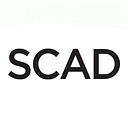Death of Childhood: McKinley Benson
The debut documentary film by director McKinley Benson (B.F.A., film and television, 2020), Death of Childhood, is part of the Student Shorts showcase at this year’s SCAD Savannah Film Festival. The eight-minute short focuses on young artist Brady Dollyhigh, and the loss of a sketchbook containing memories of his estranged father.
Dollyhigh is a childhood friend of Benson’s. “We met at church when we were eight and we’ve remained good friends ever since,” Benson say. “One of my earliest memories is of us watching Phineas and Ferb cartoons and sketching on the floor.”
Death of Childhood was originally planned to document the opening of Dollyhigh’s solo exhibition in 2019 at the Lakewood Cultural Center in Lakewood, Colorado. But things didn’t go exactly as planned.
McKinley Benson:
When I first sat down to write the treatment for what became Death of Childhood it was a completely different film. The project started as my final project for my graduate seminar Directing the Documentary [FILM 747A], with film professor Jennifer Hyde. I reached out to my friend Brady to see if I could capture his gallery opening in Colorado. I had previously documented his 24-hour long line drawing “Time” and thought this would be a perfect follow up.
I didn’t know anything about documentary filmmaking until I took Professor Hyde’s class, so I dug in as deep as could. She taught me how to write a treatment and prepare the questions in order to shape the story. I remember her sharing the importance of not only setting up the shot, but knowing what the shot should look like before I turned the camera on. It’s not as easy as showing up and interviewing people.
I was on the plane to Colorado and I felt prepared. My questions were laid out. My treatment was finalized, and I was practicing how I was going to broach the subject of his father, and their falling out. It was always going to be in the documentary, but I did not envision it as the center point. When I landed in Colorado everything went out the window.
Brady is meticulous about his sketchbooks. He is constantly drawing in them, journaling in them, and capturing his particular genius. They are a part of him, and when he lost one when we began filming the entire documentary shifted to that pain.
This particular notebook was meaningful because he was in the process of reconciling his relationship with his dad. He was grieving that loss through his art, and he had things written down that he wanted to say to his father. I was nervous when I turned the camera on for the first time. I didn’t know how deep to dig, or how he would respond to my questions, but in the end it flowed out from both of us.
I was there to document Brady’s work. He understood I had to ask him honest questions. That didn’t change the fact that I knew his dad. Our families had barbeques together, I went to his home and played, and I have my own memories of him before this. Brady wasn’t the only one in pain when we opened up that wound.
The whole shoot took place over a weekend. He painted on a mountain top. His sketchbook went missing. We dug into a dark place and we helped each other heal. His pain is real, and after we turned the camera off we were both emotional. I was packing up my camera with tears rolling down my face thankful I was there for him, and thankful he was there for me.
This is my first documentary film, and I’m excited to have it in this year’s Film Festival. I attended last year’s festival and saw some really amazing work there. It’s great to see what other filmmakers are creating, and to see what inspiration you can take away and bring to your own work.
By Robert Almand
